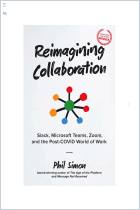
Improving the Rhythm of Your Collaboration
Alternating between always-on connectivity and heads-down focus is essential for problem-solving.
Recommendation
If your company were an orchestra, then the leaders provide the beat. In the past, they did so by setting meetings, reporting on milestones, giving steering committee reports and nudging teams in the right direction. They were able to balance face-to-face collaboration with quieter times when individuals could sit alone and come up with solutions to shared problems. Now, a culture of constant connectivity makes interaction easier but stifles the silence that some people need for creativity. The MIT Sloan Management Review created this analysis to determine whether more collaboration is always better.
Summary
About the Authors
Ethan Bernstein is a professor of business administration at Harvard Business School, Jesse Shore teaches information systems at Boston University’s Questrom School of Business, and David Lazer is a professor of political science and computer sciences at Northeastern University.





















Comment on this summary or Start Discussion